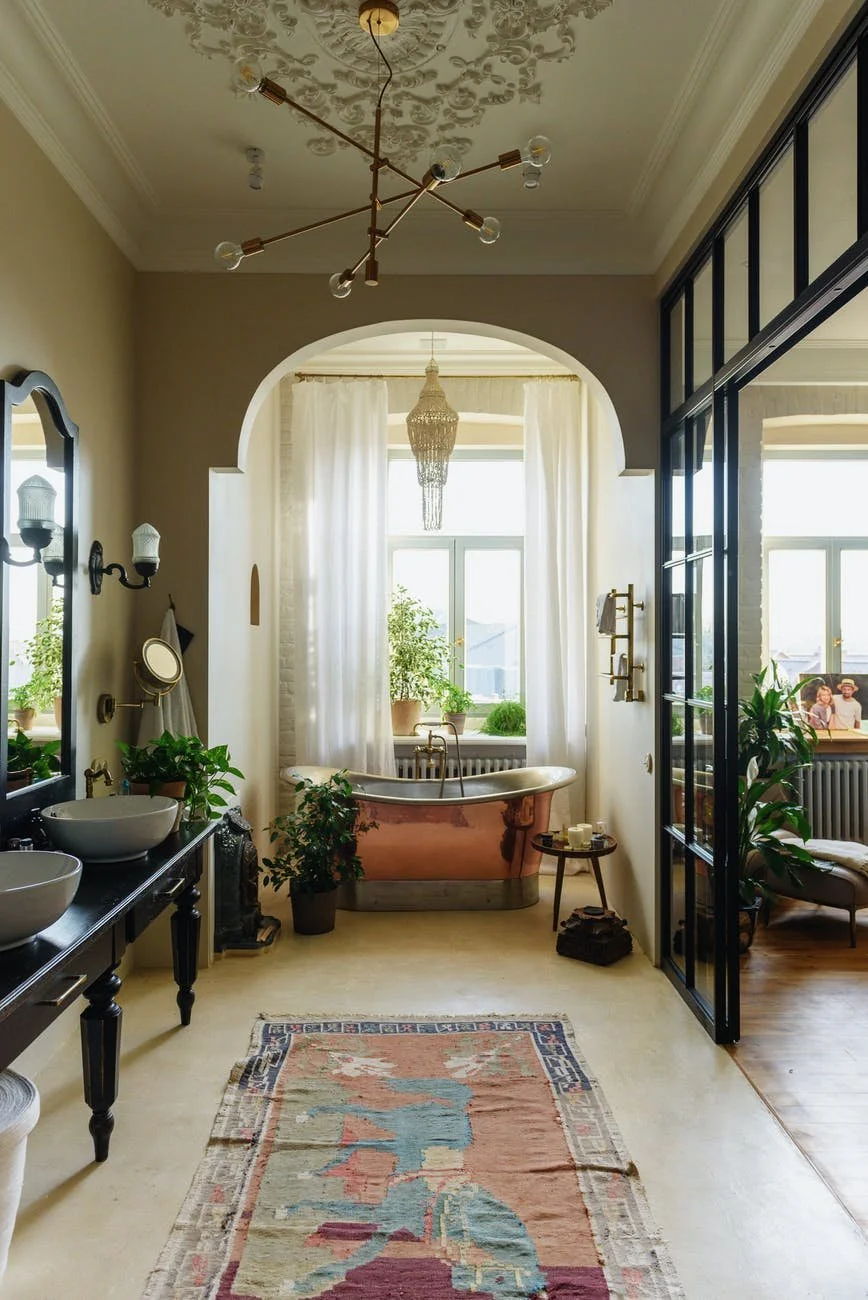Guest Post - Five Secrets Related to Luxurious Rugs No One Will Ever Tell You About
In design and décor, luxurious is not synonymous with expensive. There are plenty of expensive items that don’t rise to the level of being luxurious. Luxurious is also not synonymous with ornate, which can easily verge on gauche. Conversely, one can use simple design principles and relatively affordable décor items to create beautiful, elevated spaces. In the world of design, luxurious is that which is elegant, comfortable, and timeless, transcending not only what is “on trend” at the moment, but historical periods and entire epochs.
One of the few decor items that can achieve timeless beauty is the rug. Rugs originally designed and created by nomadic peoples of Central Asia are just at home, just as beautiful, and just as functional in an exquisite contemporary mansion as they were in tents occupied by ancient herders on the Great Steppe; exhibiting, as architect Christopher Alexander famously described, “a quality without name.”
For professionals designing high-end residential interiors for their clients, one of the easiest ways to establish a living space as truly exceptional and memorable is to dress the home with luxurious rugs. Read on for 5 secrets that leading designers use when selecting and utilizing luxurious rugs for optimum effect.
1. Purpose
As beautiful as a luxurious rug is, it does no good to focus on aesthetics alone. Too many variables will affect a rug’s usefulness and longevity to buy it simply because it caught your eye and you can’t let it go. As with all elements of home design and organization, do not forsake planning. First, ask key questions:
Am I using this rug to help define the function or functions of the space? If so, what are these functions? How large an area do I need for these purposes? These questions will influence the shape and size of the rugs you purchase.
How much traffic do I expect this rug to withstand? Moreover, what type of traffic? Will this rug be in a common space near the main entryway? Will it be in a great room where people might want to lounge about on the floor? Will it be in a private study, bedroom, or bathroom?
All of these questions should influence the rug materials that you select from. Some rug materials, such as wool and sisal, are extremely durable, but they differ in terms of softness.
2. Design With a Rug or Around a Rug?
It’s important to be intentional about the role that a particular rug will play in the design process. If you have rugs that are beautiful family heirlooms that you want to serve as a focal point for interior design, then simply keep that in mind as you plan around it.
Otherwise, are you selecting a rug that will tie elements of decor together in a room? In that case, you need to consider patterns, colors, and materials that will do the job. This aspect of planning can be trickier than one might assume at first blush. For instance, if a room includes an aquarium serving as a feature wall with exotic fish and aquatic plant life, the rug you select shouldn’t compete with, but rather promote the priority of that feature.
3. Lifestyle
Are you a retiree who wants peace and quiet, the owner of a country farmhouse, or a suburban family with a home filled with active children and pets? Even luxurious rugs must accommodate the needs of your family. Comfort, warmth, sound dampening, durability, cleaning, and maintenance are the most critical factors relative to the practical lifestyle demands of the homeowner.
4. The Bedroom Rug Reimagined
No room has had more influence on the design of high-end contemporary homes than the requirement of a master bedroom worthy of the name. When decorating a bedroom, the selection of a luxury bedroom rug can help tie together design elements in the linens, blankets, comforters, and other textiles in the room. The selection of a bedroom rug should not be left as an afterthought during an errand run to a big-box store. Choosing a high-quality, luxury piece will elevate the entire aesthetic of your room.
5. Rug Pricing
Some rugs are worthwhile decorating expenses. Some rugs can also serve as investments. Either approach when purchasing a rug is perfectly fine; however, it may be helpful to recognize if a rug’s potential investment value might offset the expense to acquire it. With the exception of artwork and fine china, fine Persian and Oriental rugs represent some of the few home décor items that can legitimately be considered valuable collectibles.
Whether purchased solely as a decorating expense or as an investment, the chief factors that determine the price of a rug include the material it’s made of, its method of manufacture or weaving, whether or not it’s imported, where it’s imported from, and size. Finally, there is also the question of what you are willing to pay versus what price the market will bear. The selling price of luxurious rugs is frequently negotiated. Only you know the degree to which you value a particular rug.
Keep it Simple
Now that you’re in on these secrets, there’s no need to overthink a luxury rug purchase. In fact, the factors presented above should help you make quicker work of deciding on whether or not a particular rug is just right for you and the space you’re looking to decorate.
Author Bio:
Carolyn Mitchell is a freelance writer and content strategist with a passion for home décor. She can often be found re-painting and updating the furnishings in her home, and she is also a dedicated cat mom to two adorable kitties.


